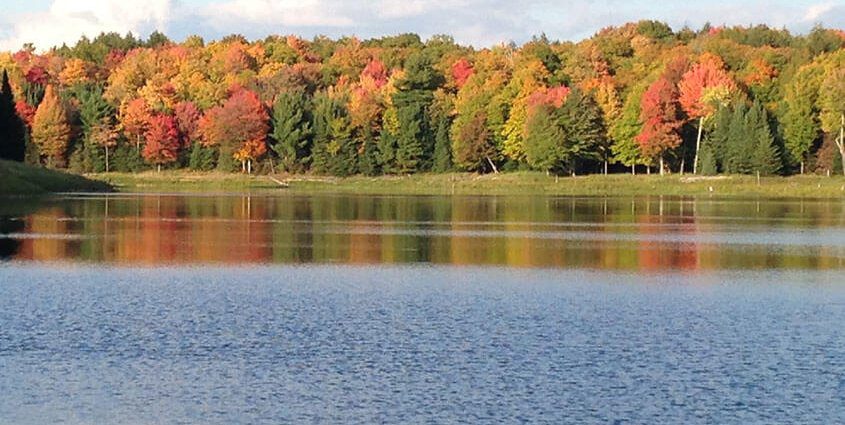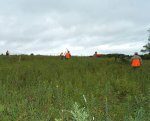Make the Most of Autumn in the Midwest
Summer has passed, and the beautiful season of autumn is upon us. This is the perfect time of year to appreciate the natural beauty of the forest around you and instill a deep connection with nature in our youth. But do you know why the leaves change color in the fall to give us such a stunning landscape portrait? And how do you make the most of the season?
Understanding the Forest in the Fall
Throughout the summer, the forest trees soak in the sunlight and the rain to maintain their healthy green coloring. When autumn comes, a complicated process involving the leaf pigments, the amount of daylight hours and weather conditions takes place to create the vivid hues we all love so much. As the color pigments in the leaves change, depending on the environmental factors, the forest comes to life with fiery oranges, yellows, and reds.
Three different pigments come into play for the popular autumn color change in the Midwest. Carotenoids, anthocyanin and chlorophyll are the color pigments. As the amount of sunlight goes down, the trees respond by producing less chlorophyll, the green pigment that dominates in the summer. Then the carotenoids step up to bring in the orange and yellow fall colorings.
You may think that the reds are brighter one year than the last, and you are right. The carotenoid pigments are present in all leaves, and the yellows, golds and oranges are fairly consistent from one year to the next. But the red coloring is produced by anthocyanin, which doesn’t exist in all trees and needs just the right conditions to shine bright.
What are the best conditions for a spectacular autumn season? Warm and sunny days with cool evenings that are above freezing are best. This is because these conditions create more sugars, which lead to brighter colors. A hot and dry season lowers the color intensity because the soil moisture level is lessened by the heat. Even climate factors in the spring can affect the fall color season – a late spring or early summer drought can delay the color change.
Identifying Trees by Their Autumn Colors
 Looking at the forest as a whole, most people don’t consider the individual trees that make up the view. In fact, it’s only because of the wonderful diversity of trees in the Midwest that the fall colors are so stunning. Each type of tree has its own hue, and, as discussed above, can be different every year so no two autumn forests are the same.
Looking at the forest as a whole, most people don’t consider the individual trees that make up the view. In fact, it’s only because of the wonderful diversity of trees in the Midwest that the fall colors are so stunning. Each type of tree has its own hue, and, as discussed above, can be different every year so no two autumn forests are the same.
- Oaks – reds and brown leaves. These are some of the last to change colors.
- Sugar maples – orange red leaves.
- Red maples – bright scarlet red leaves.
- Beech – light tan leaves.
- Aspen & poplars – golden yellow leaves.
- Black maple – bright yellow leaves.
Study up on the different types of trees in the area, and then put that knowledge to work with some educational outdoor activities!
Inspire Children with Nature This Fall
Kids love being outdoors, no matter the season, and the possibilities are always endless for fun activities and learning experiences. Here’s some ideas to get children excited about the fall season:
- Go traditional by jumping into a big pile of raked up leaves together.
- Have a day of apples – taste test apples from different trees and pick from your favorite to make an apple pie.
- Take a hike through the forest, identifying types of trees from memory or a guide book.
- Have a leaf scavenger hunt by trying to collect fallen leaves from as many different types of trees as possible. Throw in some pine needles and fall ferns for an even better learning experience.
- Take the collected leaves and make a scrapbook for the day, complete with drawings and photos from your outing.
- Make an autumn leaf collage by pasting different colored leaves on a hand drawn tree.
- Do some leaf sketching by placing paper over a leaf and rolling a pencil across.
- Study together how the leaves are broken down once they fall to the ground, and discuss why this process is important.
- Go for a boat ride to admire the colors from the water, and try your hand at some fantastic fall fishing.
- Visit a local farm to pick corn on the cob, or explore a corn maze.
- Get involved with geo-caching.
- Get sporty with pumpkin bowling – set up some short, fairly light logs as pins and roll the pumpkin for a strike.
- Go on a color scavenger hunt – set out with a chosen color and find all the things in the forest of that color.
What are your favorite fall activities and traditions? We would love to hear from you! Share your fall inspirations with The Wilderness Reserve on Facebook!
Plan Your Wilderness Family Vacation in the Midwest!
 What better way to strengthen your family bonds than a wilderness family vacation? No matter the season, your family will enjoy the inspiring beauty of nature at The Wilderness Reserve. Secluded cabins offer the perfect base to explore the surrounding forests and lakes on the 5,500 acre reserve. Ready to book your wilderness family vacation at this convenient Midwest destination? Call us today at 715-545-2700!
What better way to strengthen your family bonds than a wilderness family vacation? No matter the season, your family will enjoy the inspiring beauty of nature at The Wilderness Reserve. Secluded cabins offer the perfect base to explore the surrounding forests and lakes on the 5,500 acre reserve. Ready to book your wilderness family vacation at this convenient Midwest destination? Call us today at 715-545-2700!




